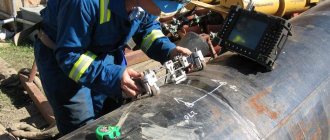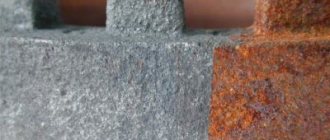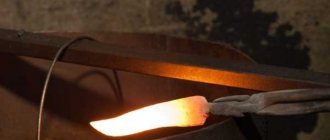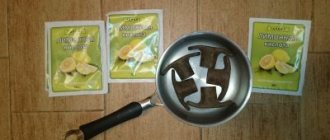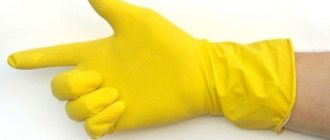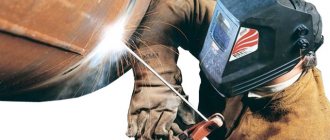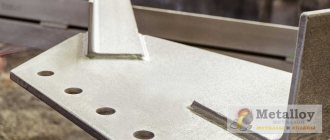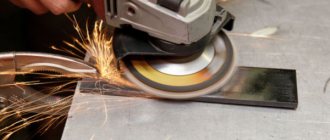The appearance of rust on metal products is so common that this red-brown coating is already taken almost for granted. Over time, under the influence of moisture and air, various surfaces, workpieces, tools and parts lose their appearance. If no steps are taken, the metal will quickly begin to deteriorate, so traces of corrosion must be eliminated immediately. However, first you need to find out how and with what you can remove rust from metal at home. There are quite a lot of life-saving remedies to get rid of dangerous plaque. In this case, they use products that are familiar to everyone, but in an unusual role for them, as well as special anti-rust preparations. But the effectiveness of both depends largely on the degree of damage to parts, pipes, tools and other metal objects.
Nitric acid
A weakly concentrated 58% solution can be purchased without any permitting documents in departments selling chemicals.
You can remove rust with nitric acid in a matter of minutes. For metal processing it is diluted to 10%. But acid can also poison the metal itself. Therefore, carrying out such experiments requires some experience.
The concentration of the solution intended to remove rust will need to be accurately calculated depending on the amount of metal. You will also need to monitor the process: as soon as the acid reacts with the oxide, the process of metal decomposition may begin. Plus, when working with such solutions, you need a high-quality exhaust hood and strict adherence to safety precautions.
Since acid can corrode not only rust, but also metal, this method is not suitable for processing metal-cutting tools (for example, dies, taps). The thread diameter can change significantly. Acids are especially dangerous for carbon steels. The more carbon they contain, the more damaged the metal will be.
Cleaning methods
There are several working methods for getting rid of metal corrosion. Experienced metalworkers successfully use them individually or in combination, depending on the complexity of the situation. These include the following methods:
- mechanical cleaning;
- chemistry;
- alternative (available means).
Which one to choose is up to the owner of the problem to decide, taking into account the available resources, including reagents, time, and the scale of the damage.
Mechanical
One of the most practiced ways to combat rust. It consists of slowly but surely removing corrosion products from the surface of steel or alloys. Hard brushes, special attachments for power tools, and abrasives are used. At the end of the procedure, dust and dirt are removed, the freed metal is cleaned and dried.
See also
Rules and methods for quickly removing dust after sanding walls
Chemical exposure
It consists of treating a rusty part or surface with concentrated acids. Alkalies are used less often.
An elementary chemical reaction occurs: under the influence of the reagent, iron oxides form a salt.
The process is not fast, and it is slowed down by the use of a weakly concentrated composition. But as a result of processing, loose, exfoliated fragments dissolve into pure metal. All that remains is to remove and wash off the remaining reaction with water.
The use of folk remedies
What to do, having experience, knowledge, and the ability to use industrial methods to solve the problem, is already clear. But what to do if all this is missing? You will have to use alternative, folk methods.
Hydrochloric acid
It acts as quickly as nitrogen. The metal begins to turn white literally before our eyes. Since the reaction process produces hazardous gases, you should not get too close to the container in which the treatment is being carried out.
A slower, but also safest method of cleaning is to mix the acid with flour. Its addition will significantly reduce the rate of metal etching. However, it will take more time to remove the rust. You can also try adding methenamine, which is a corrosion inhibitor (suppressant), to the hodgepodge.
When processing any of the acids to neutralize its residues, the product must be washed in ammonia or a weak alkaline solution of soda or soap. Please note that after removing the oily film, the metal product can literally turn red again within half an hour. Therefore, after cleaning with an anti-rust agent, it must be immediately wiped dry or thoroughly calcined so that the water completely evaporates.
The part is then lubricated, coated with a layer of zinc or painted. If it is not possible to treat the metal with an anti-corrosion compound in the near future, it is coated with a spray bottle with a mixture of lithol (solidol) and gasoline.
Causes of rust on clothes
Stains and stripes from rust can appear on any product - colored, delicate fabric, jeans, but the flaws are especially noticeable on snow-white things, which immediately begin to look old and dirty.
Most often, trousers and jeans get dirty; shirts and outerwear are somewhat less common. You can get dirty when sitting on a dirty bench where there are rusty elements. It is not uncommon for children to develop rust stains after visiting playgrounds.
Other reasons why there is a risk of detecting rust on things:
- a number of products contain metal parts (clasps, buttons on pockets, rivets), which can damage the fabric during washing;
- if you wash dresses, blouses and hang them to dry on metal wires, old radiators, you can then find dirt and rust on the clothes;
- gloves often get dirty when touching rusty pipes, machine parts, or when exercising on outdoor exercise equipment in the cool season;
- an old iron with a rusty bottom can leave brown stains on fabric items;
- Before washing things with pockets, you need to remove their contents, otherwise the remaining hairpins, hairpins, metal money will leave stains and rusty stains when in contact with water.
Phosphoric acid
This method is perhaps the most common and safest. After all, phosphoric acid does not remove the oxide layer, but turns it into a film that can serve as an anti-corrosion coating. However, this method is only suitable for metal products that are only slightly affected by rust.
There is a special product on sale called “Anti-rust”. It is made precisely on the basis of orthophosphoric acid. True, such a solution acts a little slower.
If the plaque is large enough, it is better to use a combination of the first and second methods. First, treat the part with hydrochloric acid, and use phosphoric acid to only record the result.
Harm to health
The product is potentially dangerous and toxic to the body if used incorrectly. If it comes into contact with the skin, it causes burns, burning, and irritation. Even low concentrated acid causes irritation upon prolonged contact.
If the substance is accidentally ingested, the following symptoms may occur:
- difficulty breathing;
- convulsions;
- vomit;
- kidney damage;
- hypocalcemia;
- stomach ache.
Prolonged contact with the skin causes cyanosis and gangrenous changes.
Vinegar or lemon
You can even remove rust from metal using these acids. The cleaning method is simple and safe. The metal product is placed in a solution of citric acid (a couple of 20-gram bags will be enough for 2.5 liters of water). Large surfaces are sprayed with a spray bottle.
The exposure time depends on the degree of damage to the metal. As a rule, it is no more than a day. You can do it differently. Soak the part in the solution for a couple of hours, and then rub the softened layer with a metal brush or foil. It will come off easily. To speed up the process, the citric acid solution can be pre-boiled.
Another advantage of citric acid treatment is the possibility of further galvanizing without pre-cleaning. Zinc will not adhere to the phosphate film formed as a result of the interaction of “rye” with orthophosphate acid. Another advantage is that lemongrass does not affect varnished or painted surfaces.
Processing with vinegar is carried out in the same way. The greater its concentration, the better. You can even use a 70% solution. When you add regular salt to the vinegar (pour enough of it until it stops dissolving), the effect will increase. If the layer of plaque is large, before cleaning the rust with acid, the surface can be treated with an iron brush or sandpaper.
Industrial methods of prevention
In addition to forced rust removal, there are methods to prevent metal oxidation. These include:
- galvanic treatment;
- cathodic protection;
- application of inert coatings.
See also
How to clean your computer from dust at home, step-by-step guide
It is problematic to apply these methods in everyday conditions due to the lack of appropriate equipment and the complexity of technological processes.
Galvanization
The method involves depositing a thin layer of a substance that is slightly susceptible to oxidation onto ferrous metal using electrolysis. The nuance of the situation is that as soon as the protection is broken, corrosion immediately begins.
Cathodic protection
A method that involves the use of a direct current source that creates a zone of negative electrical potential on the protected surface. Successfully used on large objects (ships).
The weak point is the need for a continuously operating battery to power the device.
Special coatings
Protection methods using specially applied metal coatings may be no less effective than others. Typically, they are made using substances that do not react with condensation or moisture.
Galvanization
Coating with a layer of zinc perfectly protects the base metal from oxidation and makes it inert towards slightly aggressive environments. Widely used to protect body parts, in the manufacture of hardware and fasteners.
Tinning
The basis of the method is coating the metal with molten tin solder. The resulting layer resists oxidation well and prevents the spread of corrosion.
Using electrolysis in soda ash
This treatment allows you to keep even chrome surfaces intact. Using soda ash we will obtain carbonic acid, which will clean the metal.
We'll tell you how to clean rust from metal in a similar way:
- When making a small amount of solution, even an old phone charger can serve as a power supply. To process a significant volume of parts, you can take, for example, an old computer power supply.
- It is necessary to connect a minus to the workpiece, and a plus to the electrode.
- For better conductivity, the area to which the wire will be connected must be cleaned with sandpaper.
- A suitable sized piece of tin is used as a positive electrode.
- In 3-4 hours of such treatment, even significant layers of iron oxide can be removed. If necessary, electrolysis is repeated.
- Remaining rust can be etched in a vinegar solution.
You can get rid of rust at home using any of the methods described above. For processing large parts, the use of acids is acceptable. Cleaning metal-cutting tools and machine parts in this way to avoid etching of the metal is unacceptable. It is better to subject them to electrolysis or place them in a solution with kerosene or diesel fuel.
Recommendations for surface treatment
To ensure that rust removal has maximum effect and does not cause harm, it is recommended to use the following expert advice:
When using caustic acids and their solutions, it is necessary to use personal protective equipment, including a respirator.- It is advisable to carry out work outdoors. Or in a room with very good ventilation.
- If there is significant corrosion, it is recommended to clean the metal with a stiff brush before treating with acid.
- After washing off the acid, the metal surface must be dried.
- Several acids should not be mixed together unless specified in the recipe.
Using purchased products to remove rust is more convenient than making your own solutions.
You will find a lot of useful information about rust removal in this section of the site.
What is the best way to remove rust stains from plastic and acrylic?
- A method that will help you deal with stubborn stains on any plastic or acrylic surface. Take a lemon and make a fresh cut. Sprinkle the cut with salt and wipe away any rust marks. There is no need to wait: wash off the treatment composition immediately. Repeat the procedure if necessary.
- Pure rubbing alcohol can easily remove minor rust marks. Apply the liquid to a cotton pad and wipe away any dirt.
- Undiluted white will help remove red marks from plastic window sills. Simply apply bleach to the stain and rinse off after 1 minute.
Use white only on thick and dense plastic! It is not recommended to use it for cleaning plastic panels!
What is rust and what is its danger?
When interacting with water and air, iron begins to oxidize and the result is a bright orange-brown coating - rust, which indicates the beginning of destruction of the material and product/structure. Neither pots and pans, nor plumbing and kitchen fittings, nor clothing are immune from rust. What can we say about the metal objects around us, tools, cars, various equipment, etc. To slow down or even completely stop the degradation process, you need to remove the deposits that have formed. How to act in different situations - read on.
Traditional methods
Someone who is skeptical is ready to argue that it is unlikely that the situation with rust can be solved with improvised means, compounds that, as a rule, are found in every apartment. It turns out that it is possible. Many have independently tested these methods in practice, actively use them and share their knowledge with friends.
Baking soda
This product, which is present in all kitchens, can be safely added to the list of universal ones. In addition to cooking, it has proven itself excellent in removing stubborn stains from coffee, green grass, blood, and also in cleaning metal from rust. To prepare the composition you will need: baking soda and water . Taking into account the processing area and the degree of damage to the material, the required amount of ingredients is selected: the finished mixture should have a moderately thick consistency - store-bought sour cream.
Apply the mixture to the surface of the stain and leave for 25-30 minutes. This is the optimal time to remove a small amount of rust and after it has passed, it is enough to wipe the treated area with a damp cloth. The attempt was not very successful - then the procedure should be repeated, and in case of “overgrown” contamination, it is better to first use a metal scraper.
You should not place high hopes on this method if there is a large area of damage. But you can safely use it when you need to quickly, one-time get rid of a small spot of rust. Don't forget about other types of soda.
Baking and soda ash
The product is suitable for cleaning enamel bathtubs. baking soda and soda ash in a small amount of water in a 1:1 ratio (2-3 tablespoons is enough). Cover the affected area with the resulting mixture and leave for 1.5 hours. The next step is to apply 50 g of bleach and the same amount of vinegar on top. While waiting for the cleansing reaction, we leave all the products for another 0.5 hour, after which we wash everything off with warm water.
For those who have a cast-iron bathtub, you can use a mixture of soda ash and laundry soap (1:1). Rub the soap on a coarse grater, add soda, warm water, and bring the mixture to a homogeneous thick consistency. Apply the resulting paste to the damaged surface for 1-1.5 hours, then rinse with water. If the rust has not been touched for a long time, it has become old, then the proposed composition can be improved with the help of ammonia . Its quantity is the same as the other components. Let the renewed slurry sit on the rust stain for 1.5 – 2 hours, then wash off with warm water.
Caustic soda
You will have to work hard to prepare a solution that contains the specified alkali (caustic soda, sodium hydroxide), but it is worth it. To create the product we take: water - 300 ml, caustic soda - 50 g, formaldehyde 40% - 250 g, ammonium - 50 g . We dilute the resulting paste in 1 liter of water and lower the rusty parts into the ready-made solution. Cleaning time can vary from 15 to 30 minutes, since it directly depends on the degree of damage to the material. The final stage is rinsing generously in hot water and wiping dry. This method is good for removing rust from steel products.
Laundry soap and raw potatoes
Every housewife will be glad to quickly and without unnecessary problems remove small rust from the oven, baking sheet or stove. This is not difficult to do. Take raw potatoes, cut them in half, be sure to salt them and grease them with soap. We use the resulting part of the vegetable to eliminate the problem, like an abrasive sponge with an additional element - oxalic acid. Sometimes during the process you have to renew the cut, soap it and continue working, or you can leave part of the tuber on the corrosive area for 3-4 hours. Vegetable to cope with the task.
During the season, when potato tops are still green and juicy, they are used to create an anti-corrosion composition. Fill a 3-liter jar halfway with tops, add hydrochloric acid so that it just covers the greens. Stir the future inhibitor for 15-20 minutes, then drain, filter and you can treat “red” spots
Ketchup
Tomato sauce, paste or ketchup - with their help, any woman will conquer rust stains. The secret of the wonderful power of the products is quite simple: tomatoes contain a considerable amount of the same oxalic acid, which destroys rust. In addition, many preparations contain citric acid as a preservative, which only enhances the effect of its friend. Apply sauce, ketchup or juice to the surface with rust, wait 20-40 minutes, sometimes let it sit for a couple of hours. Then rinse and wipe dry. The method works successfully on the surface of the bathtub, and is also useful when cleaning cutlery (forks, knives, spoons) and other metal utensils.
Fish fat
Some craftsmen and car enthusiasts have made this useful product work for themselves. Fish oil is much more active than its fellow fats in dissolving the rust component – iron hydroxide. Under the influence of the first (1.5 - 2 hours), the rust softens and is quite easy to remove. In addition, penetrating well into the depths of the damage, fish oil forms a thin protective film that blocks the access of air, stopping the process of metal oxidation and destruction of the part.
When the problem, even a small one, but there is noticeable damage to the paintwork, a very fast and, at the same time, correct way to get rid of rust is needed. The best options are a rag soaked in kerosene , or a swab with a mixture of crushed charcoal and machine oil . The advantage of the latter is simultaneous cleaning and polishing of the surface
Pork fat
The method is old, but it will help keep metal tools clean and in good working order. Add camphor (2 g to melted pork fat (100 g , mix until smooth, carefully skim off the foam and add powdered graphite . Apply rubbing movements to the instrument and leave for 24 hours. Then we rub the tools with a woolen cloth and everything is in order.
Graphite powder in combination with some greasy product, for example, Vaseline , is an excellent anti-corrosion protection for threaded nuts, screws, etc. Even after a long stay outdoors, in snow or rain, the treated parts can be easily unscrewed
Paraffin
Another way to treat parts against corrosion. After all, the first thing that comes to mind when you hear the word rust is iron. Not quickly, but effectively, you can treat metal elements with a paraffin solution (saturated). Paraffin shavings are dissolved in a container with kerosene until saturated (maximum concentration). The solution will be ready after seven days. The part is kept in it for several more days and the rust is removed without any problems.
Coca Cola
World-famous sodas Coca-Cola, Pepsi, Sprite, Fanta are multifunctional drinks. They not only quench thirst well, but are often used to clean various surfaces and remove various stains and rust from them.
Do you want to clean the red stains from the drain tank? Please. Take: 2 liters of Coca-Cola, 450 g of soda, 120 g of citric acid and 45 ml of vinegar , mix everything and pour it into the tank overnight. In the morning you will have to work a little with an old toothbrush to clean small parts, and then simply rinse the entire structure inside with water.
Having picked up Cola, you need to know that if the surface is chrome or sanitary ware, then there will be no problems with cleaning, but if the rust is directly on the iron surface, then you will have to tinker and make an effort
It is also possible to stop the destructive process on coins and cutlery. Place small items in pre-prepared dishes, fill with soda, and leave for two days. The degradation of the material will be much reduced; if necessary, the process can be easily repeated again.
More than once men have encountered such a problem as “stuck” rusty bolts. And you need to unscrew them. Therefore, we take a cloth, soak it well in the drink and wrap it around the part itself or the entire fastener so that the liquid, by any means, slowly gets inside the fastener. Phosphoric acid will do the trick.
"Alka-Seltzer"
The analgesic drug copes well with such a problem as rust. The explanation for this is the composition of the drug: two types of acids (citric, acetylsalicylic) and sodium bicarbonate (baking soda). To ensure that all the ingredients work in the right direction, crush the tablet and add just a little water to get a “mush”. Apply the resulting mixture to the rust stain, wait for some time (possibly up to 2 hours), and remove the residue with a sponge or cloth.
If cutlery or small parts need cleaning, then take a convenient container (bowl, basin, jar, etc.), fill it with water, in which we dissolve the famous anti-hangover remedy in the amount of 4-7 tablets. Dip the selected items into the resulting solution and leave for 15-25 minutes. Afterwards, rinse well, wipe, and use.
Formalin
You can clean the rusty surface of a part in 30-45 minutes if you prepare the following solution: 200 g of formaldehyde, 80 ml of alcohol, 500 ml of water . The object is dropped into a container filled with the specified liquid and soaked.
Glycerol
Excellent products for colored clothes: glycerin with dishwashing detergent , glycerin with chalk in equal proportions, glycerin with tooth powder . Each mixture can combat rust stains. Bring the mixture to a creamy consistency with water, apply to the problem area, and leave for a day. After 24 hours - thoroughly wash and clean item.
Hydrogen peroxide
Quite often, hydrogen peroxide and ammonia are used in everyday life. But perhaps not everyone knows that this couple is a very good tool for removing rust in the bathroom. To clean, you need to take: hydrogen peroxide - 50 g, ammonia - 100 g . Combine the ingredients in a prepared container, moisten a rag, tampon or sponge in the resulting mixture, treat the corrosion stain and let stand for 15-20 minutes. Then rinse with warm water.
Many housewives have adopted another method to clean the same bathroom. From three components: hydrogen peroxide - 100 ml, water - 300 ml, gelatin - 70 g , the mixture is prepared and infused for a quarter of an hour. When the mass has reached the desired viscosity, it is applied to the affected area and left for 10 hours. It’s very convenient to just leave it overnight and then rinse everything off with warm running water in the morning.
To remove rust from metal parts, a composition consisting of: 100 g of peroxide, 30-40 g of citric acid, 20 g of salt (level tablespoon) is suitable. Pour the resulting solution into a convenient container and safely lower the rusty items into it. The onset of the reaction can be noticed almost immediately, and after 2 hours the result is noticeable. Products are easily freed from red oxides.
Diesel fuel
This cleaning is well known to those who deal with nuts, screws, keys, screwdrivers, etc. To remove rust, diesel fuel is poured into a suitable container (usually a canister) in such an amount that it covers the tools placed in it. The objects of labor remain in this state for a day, then they are removed, treated with a brush (brass is suitable) and a metal brush, then wiped with a rag.
Kerosene
The specific smell of kerosene is unlikely to allow you to treat exposed rusty surfaces in the kitchen or bathroom. But, in a closed container, processing small metal objects will not be difficult.
You can save problem areas of large products using a rag soaked in kerosene. The rag must be wrapped around the affected area and left for 1-2 days.
Washing clothes with rust in a washing machine
Using an automatic machine will make the process of removing rust from things much easier for the housewife and will seriously improve the results.
First you need to remove excess dirt from the fabric with a soft-bristled brush, then rinse under cold water. Afterwards, you can put the item to soak or turn on a mode that already provides such a function (for example, with pre-wash). Then wash the product with powder or stain remover. Usually the result is pleasing: the clothes return to their original appearance.
It is better to try not to get rust stains so that the item serves faithfully without much hassle and effort.
Homemade chemical solution
There is another recipe for removing rust with your own hands. To do this, you need to make a solution for which you will need water, caustic salt, ammonium and forty percent formaldehyde. Mix everything in the following ratio: four parts water, one part salt, one part ammonium and five parts formaldehyde. All this is by weight.
The resulting solution must be poured into a container with a liter of water. You will dip the objects into which you want to get rid of rust. To do this, you need to do their preliminary cleaning.
To do this, you need to remove all dirt from the surface and then degrease it. This solution can remove rust from ten minutes to half an hour. Everything depends more on the level of density of corrosion that has covered the surface.
Removing rust from bathtubs and other enameled objects
- In a clean, dry half-liter glass jar, mix 100 ml of ammonia and 50 ml of hydrogen peroxide. Using a dry sponge or rag, apply the mixture to the rust and wait 10-15 minutes. Then simply rinse the solution with water and clean the surface with any household cleaning powder.
- Prepare the mixture in a glass jar: add 2 tablespoons of salt to 100 ml of wine vinegar, mix and heat the solution in the microwave to a temperature of 60-65 degrees. Use the resulting mixture to wipe off the dirt and then rinse everything off with cold water.
- Hydrochloric acid is a solution that perfectly removes rust marks from enameled metal products. Don't forget about precautions! Apply the mixture to a dry cloth and apply to the problem area for 10-15 minutes. After the cleaning procedure, thoroughly rinse the treated surface with plenty of water, then, if the method was used in the bathroom, wash with detergent and rinse again.
Safety precautions when working with acid
Phosphoric acid is classified as a hazardous chemical. Contact of this substance with skin may result in painful burns. The substance also releases harmful vapors that are dangerous to the respiratory tract.
Based on the above, transportation, storage and work with this material requires compliance with certain safety standards. You can work with phosphoric acid only in protective clothing, gloves and a respirator.
In case of unwanted contact of the substance with the skin, the following actions must be taken:
- First of all, you need to remove clothing that has been exposed to harmful liquid.
- Next, rinse the affected area of skin with a significant amount of water. It is best if it is running water. The approximate duration of washing is 15-20 minutes.
- Under no circumstances should you rub the liquid over your skin. The substance should not be wiped off with napkins or a towel, but rather washed off.
- Sometimes a one-time rinse does not help. In this case, you need to extend the procedure for another 15-20 minutes. It is recommended to do the same if the burning sensation recurs after some time.
- Before the doctor arrives, it is recommended to apply a loose (non-constricting) gauze bandage to the affected area.
- If the pain syndrome is too bothersome, you can take a painkiller (for example, analgin).
So, all work with orthophosphoric acid must be carried out with extreme care and attention. If the incident does occur, then after providing primary assistance to the victim, you should immediately consult a doctor.
How does corrosion affect the performance of equipment and tools?
What is metal corrosion? As people of the older generation would say, this is such a hellish foreign group that destroys our brain with its music. But let’s not argue about tastes and leave the “Metal Corrosion” group alone, but the essence of the statement is true: this is a chemical process that destroys a metal surface.
Equipment and tools made of metal and subjected to a corrosive process begin to change in appearance. At first it is almost invisible to the naked eye. Then rusty pitting and roughness appear on the surface
The process is started, and if it is not stopped, the damage penetrates deep into the material. All metal devices damaged by rust begin the countdown until they are written off. Therefore, to prevent this from happening, you need to remove corrosion in a timely manner.
Why even a little rust can become a big problem
As soon as man learned to mine and use iron ore, he began to look for ways to preserve the metal from corrosion. Herodotus, in his works, described in detail the technique of coating iron with a layer of protective tin, and archaeological excavations of more ancient cultural layers indicate the practice of protecting metal products using lubricant.
Only high-quality lubricant can prevent corrosion.
So what happens to such a hard and durable metal, why does it become loose and brittle over time? It's all about oxygen. It is he who causes a chemical oxidation reaction, gradually capturing deeper and deeper layers. There is only one way to stop this reaction: to cover the object with a protective layer that will prevent direct contact of the metal with air. If this is not done, the rust will grow from a small speck into a huge ulcer, and then completely turn into a hole. Objects made of thin sheet metal especially suffer from this process: plumbing fixtures, dishes, various household containers.
Read also: How to connect two light bulbs to one plug
Is it possible to prevent this process? Careful care, protective coating and timely lubrication are all simple preventative measures. What to do if corrosion does appear?

